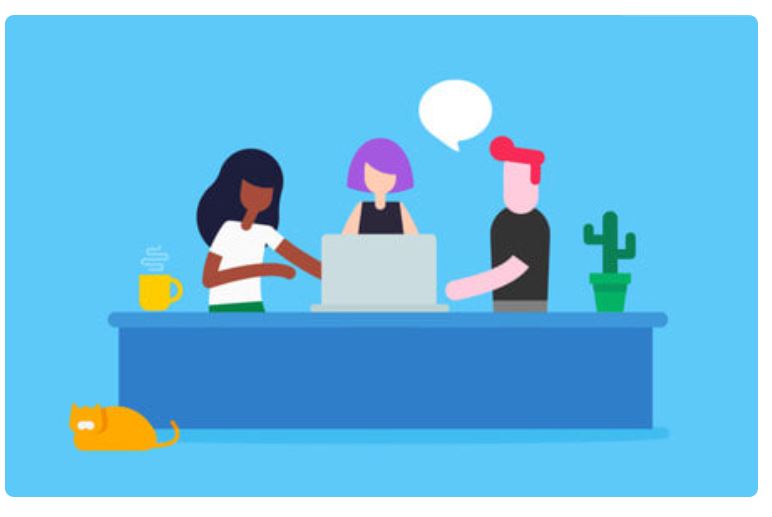It’s no secret that creating an app that stands out in today’s competitive SaaS app marketplaces is not an easy task. You’ve got the idea, designed the app, developed the features, conducted usability testing, and launched it – but one critical ingredient often gets overlooked: effective customer support.
We’ve all been on the receiving end of poor support. Nothing sours a great app experience faster than a delayed or unclear response when help is needed most.
In this article, we’ll explore why customer support is vital for app success. From choosing the right support channels to leveraging self-service solutions and mastering response management, we’ll dive into the strategies that ensure your app thrives.
Start buildingThe importance of effective support for your app

Customer support goes beyond resolving user queries; it’s a cornerstone of the customer experience and directly impacts your app’s success. At its core, great support builds trust, strengthens user relationships, and fosters trust through meaningful interactions, ensuring a seamless and user-centered experience.
Here’s how customer support benefits your app across three critical areas:
1. Retention
Users are more likely to stick around when they feel heard and their issues are resolved quickly. Timely and effective support fosters loyalty and reduces churn.
2. Reputation
With social media and online reviews influencing user opinions, a single positive interaction can lead to glowing recommendations, while poor support can damage your app’s standing. Proactive support not only resolves user issues quickly but also creates a smoother, more enjoyable app experience, leading to higher satisfaction and positive feedback.
3. Competitiveness
Customer support plays a pivotal role in setting your app apart in a crowded market. While many apps offer similar functionalities, exceptional customer support can elevate your app by showcasing your commitment to user success.
Demonstrating to customers that real, dedicated professionals are behind the app fosters trust and confidence, ensuring they feel valued and supported throughout their experience.
Choosing the right support channels
Selecting the right mix of support channels is key to meeting user needs and aligning with your resources. Offering support through the channels that your users are most comfortable with can significantly enhance their experience and satisfaction. Below is a breakdown of popular support options:
To help you decide which support channels might work best for your app, let’s look at some of the pros and cons of each support channel:
Self-service support
Empowers users to resolve issues independently with resources like FAQs, guides, and tutorials.
- Pros: 24/7 availability, reduced workload on your team.
- Cons: Requires regularly updated, user-friendly content.
Email support
Allows for detailed communication and provides a written record of interactions.
- Pros: Ideal for complex queries and asynchronous responses.
- Cons: Perceived as slower, especially for urgent issues.
Live chat
Provides users with real-time assistance through direct interaction with support agents.
- Pros: Immediate responses enhance user satisfaction.
- Cons: Requires staffing and careful management to ensure availability and quality.
Chatbots and AI-powered assistance
Offers automated real-time responses for common queries, with the potential for 24/7 availability.
-
Pros: Cost-effective, scalable, and reduces workload for repetitive issues.
-
Cons: Handles common issues efficiently but might struggle with complex problems.
Social media
Enables users to reach you on familiar platforms like Facebook, X (formerly Twitter), or LinkedIn.
- Pros: Public responses show transparency and dedication to support.
- Cons: Mishandled complaints can impact your reputation.
As an interesting side note, you might have noticed that we haven’t touched on phone support. That’s because while phone support can offer a personal touch, many app owners choose to avoid it due to its resource-intensive nature, potential language barriers, and the logistical challenges of managing different time zones for global customers.
For instance, using monday.com for tickets can be a good solution which some app developers turn to. Being able to consolidate all information into one central work hub can really enhance your workflow. And with monday.com’s integrations, you can connect with other platforms to streamline these processes.
In a nutshell, it’s about providing support where your users are, and in a way that they prefer. A well-thought-out multi-channel approach can ensure your users always find help when they need it, thereby enhancing their overall app experience.
Start buildingNext, let’s delve into the power of self-service support and its vital role in enhancing user experience in the SaaS marketplace. While we’ve already touched on self-service support, it’s such an important theme that it deserves its own section.
The power of self-service support

Self-service support is a crucial part of customer support for SaaS marketplace app developers. It empowers costumers to solve issues independently and quickly, reducing their reliance on live support. This proactive approach is not only beneficial for costumers but also lightens the workload for developers, making it a win-win solution.
Self-service options, like FAQs, tutorial videos, troubleshooting guides, and AI-powered chatbots, provide instant answers to users without waiting for a team response. This boosts user satisfaction and allows developers to focus on more complex support needs.
The key to effective self-service lies in creating resources that are:
- User-friendly: Simple and intuitive to navigate.
- Comprehensive: Covering a wide range of common issues.
- Regularly updated: Ensuring relevance as the app evolves.
For example, a well-structured FAQ page can address frequent questions, reducing the volume of repetitive queries. Tutorial videos and step-by-step guides are equally impactful, visually walking users through processes or features at their own pace.
Additionally, troubleshooting guides and clear, actionable error messages play a vital role in enhancing user experience. Avoid technical jargon in error messages; instead, provide easy-to-understand explanations and direct users to the relevant support resources.
By leveraging feedback, regularly updating content, and focusing on clarity, self-service support becomes a powerful tool to enhance both user satisfaction and developer efficiency. It’s an ongoing effort that drives continuous improvement and user trust.
In essence, when it comes to creating self-service content it’s key to understand and anticipate user’s needs. And creating clear documentation is about meeting those needs in a user-friendly, accessible, and helpful way. It’s an ongoing process that can significantly enhance the user experience and satisfaction with your app.
Managing responses effectively

Of course there will still be times when you need to respond to customer queries. That’s why managing customer inquiries and complaints is an integral part of any successful customer support strategy.
Effectively handling responses not only helps resolve issues promptly but also showcases your commitment to customer satisfaction. It’s more than just addressing the issue at hand; it’s about enhancing the user’s overall experience with your app.
One critical aspect of managing responses effectively is having a system in place to prioritize and track issues. Not all inquiries or complaints are created equal. Some might be minor bugs that cause little inconvenience, while others might be major problems preventing users from using your app. Prioritizing issues based on their severity and impact can ensure that the most critical problems are dealt with promptly. A well-organized ticketing or tracking system can facilitate this process and prevent any issues from slipping through the cracks.
When it comes to responding to users, empathy and solutions-focused communication can go a long way. Remember, behind every ticket is a person who’s experiencing a problem. A well-worded response that acknowledges the issue, expresses understanding, and offers a solution can significantly enhance the user’s experience. Even if a quick fix isn’t available, communicating the steps you’re taking to resolve the problem can reassure the user and maintain their trust in your app.
Follow-ups are another key component of effective response management. After an issue has been resolved, reaching out to the user to confirm they’re satisfied with the solution can convey that you genuinely care about their experience. It can also help identify any ongoing or new issues the user might be facing.
Start buildingElevate your SaaS marketplace app
In the competitive SaaS marketplaces industry, providing effective customer support is a non-negotiable component for the success of your app. By understanding the importance of customer support, choosing the right channels, empowering users through self-service, and managing responses effectively, you can transform support into a strategic advantage.
Remember: at the heart of every successful app is a community of satisfied, supported users.

